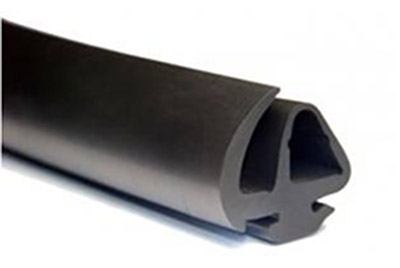
How Does Plastic Extrusion Work?
Plastic extrusion involves melting plastic into solid, finished products such as pipes and tubing. Understanding how extrusion methods work helps determine which technique fills a business’s needs. Some processes include co or tri-extending, which can produce a wide variety of shapes, forms, and textures. At Clark Rubber and Plastic, we provide plastic extrusion services for products used in various industries. Here’s how our process works:
Heating
Our team at Clark Rubber and Plastic uses various types of plastic for extruding, including PVC, acrylic, and TPU. We start the process by heating the materials to create a specific product for a business’s needs, whether it’s automotive or solar parts. Our manufacturers may also add colorants or stabilizers to the melted mixture to enhance its final quality.
Heating occurs as the plastic pellets fed into the melting chamber are pulled along by a revolving screw. The friction caused by the movement increases the pressure and generates heat, leading to melting. A filter screen sits at the end of the melting chamber, which removes impurities from the melted plastic as it is pushed through.
Shaping
The melted plastic is pushed out of the barrel chamber through a die, which sets the final shape of the extruded product. Some common plastic products created through extruding include bars, pipes, wire insulation, and monofilaments. Plastic extrusion also creates products with custom profile features like edges and channels. Co- and tri-extruding can create items made with different components or incorporating different colors. In both processes, the materials composing the outer layers are of high quality to help the finished product be more stable.
Some shrinkage can occur during the extruding process and is more common with complex profiles. Designers may overcome this by being generous when sizing a die, allowing a small amount of extra space in the mold to account for shrinkage. Additional shearing can be done later on the production line to maintain uniform sizing.
Cooling
The shaped plastic profile is set through cooling, finalizing the product’s form. This process happens as belts pull the profile through a long trough containing a cold water bath. Certain products, such as plastic pipes, might require additional mechanisms that remove heat in order to keep their shape. Designers may apply a vacuum to the water bath to keep the pipe from collapsing as it cools.
The belts pulling the profile along also help to correctly size the cooled profile, satisfying the client’s required dimensions. The sizing belt pulls the profile through a final opening, at the end of which a blade slices it into individual pieces. These are the completed products that are then sent on to users.
Your Partner in Plastic Extrusion
The plastic extrusion process requires a tightly controlled environment to deliver quality products. At Clark Rubber and Plastic, our professional extrusion services deliver the precise results needed for products to meet industry standards. Our team has extensive experience and access to the necessary production capacity to fulfill almost any request. Contact us today for a quote on your next job.
